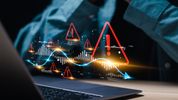Shrinking sensors, because they are so small, nanosensors can collect information from millions of different points. External devices can then integrate the data to generate incredibly detailed maps showing the slightest changes in light, vibration, electrical currents, magnetic fields, chemical concentrations and other environmental conditions.
Needs apowerful and scalable analytics platform for these data and the wider structured, semi-structured and structured data. Delivering meaning and insight to everyone that needs it.
And self-service BI for users to add intuition to make full sense of this new and ever-increasing data stream of data
And combining the cognitive power of the human brain and the benefits of AI and machine learning
When it arrives, the IoNT could provide much more detailed, inexpensive, and up-to-date pictures of our cities, homes, factories—even our bodies. Today traffic lights, wearables or surveillance cameras are getting connected to the Internet. Next up: billions of nanosensors harvesting huge amounts of real-time information and beaming it up to the cloud.






